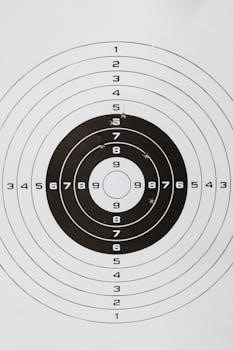12 tenses in english pdf
Overview of 12 English Tenses
The English language utilizes twelve tenses‚ each a combination of time and aspect‚ indicating when an action occurs and how it’s experienced. These tenses are vital for accurate and effective communication‚ allowing us to express actions as completed‚ ongoing‚ or relating to different points in time.
Basic Tense Structure
Understanding the fundamental structure of English tenses is crucial for mastering their usage. Each tense is built around a core verb form and often uses auxiliary or helping verbs. The primary component is the base form of the verb‚ typically used in the present simple tense. This base form can be modified by adding “-s” or “-es” for the third person singular in the present tense. Then we have forms of auxiliary verbs which include “to be”‚ “to have”‚ and “will/shall”. These help indicate the specific tense. For example‚ the continuous tenses employ the “to be” verb (am‚ is‚ are‚ was‚ were) followed by the present participle of the main verb (adding -ing). Perfect tenses use “to have” (has‚ have‚ had) along with the past participle of the main verb. Finally‚ future tenses commonly use “will” or “shall” followed by the base form of the main verb. By combining these elements‚ the twelve distinct English tenses are formed‚ allowing for nuanced expression of time and aspect in language.
Simple Tenses (Present‚ Past‚ Future)
The simple tenses in English‚ namely present‚ past‚ and future‚ form the foundation of time expression. The simple present tense describes habitual actions‚ general truths‚ or current states. It uses the base form of the verb‚ adding “-s” or “-es” for third-person singular subjects. For instance‚ “I work” or “She works”. The simple past tense denotes actions completed in the past‚ often with a specified time. Usually‚ this tense uses the past form of the verb by adding “-ed” to the base form (for regular verbs)‚ or a unique form for irregular verbs‚ such as “I went” or “They played.” The simple future tense expresses actions that will occur in the future. It employs auxiliary verbs “will” or “shall” followed by the base form of the verb like “I will go” or “They shall see”. These three simple tenses provide a basic framework for understanding time in English.
Continuous Tenses (Present‚ Past‚ Future)

The continuous tenses‚ also known as progressive tenses‚ focus on actions that are ongoing at a specific time. The present continuous tense describes actions happening now‚ using the auxiliary verb “to be” in the present tense (“am‚” “is‚” “are”) followed by the verb’s present participle form (-ing). For example‚ “I am working‚” or “They are playing.” The past continuous tense indicates actions that were in progress at a particular time in the past‚ using “was” or “were” plus the present participle‚ such as “She was studying‚” or “We were waiting.” The future continuous tense expresses actions that will be in progress at a certain time in the future‚ using “will be” plus the present participle‚ for example‚ “I will be traveling‚” or “They will be watching.” These continuous tenses emphasize the duration of actions in time.
Perfect Tenses (Present‚ Past‚ Future)
The perfect tenses emphasize the completion or result of an action up to a specific point in time; The present perfect tense connects past actions to the present‚ using “have” or “has” plus the past participle form of the verb. For example‚ “I have finished my work‚” or “She has traveled to Europe.” The past perfect tense refers to actions completed before another point in the past‚ using “had” plus the past participle‚ such as “He had eaten before we arrived‚” or “They had left before the storm.” The future perfect tense speaks about actions that will be finished before a specific time in the future‚ using “will have” plus the past participle‚ for instance‚ “I will have finished the project by next week‚” or “They will have moved to the new house by the end of the month.” These perfect tenses provide a sense of completion or consequence of actions.
Perfect Continuous Tenses (Present‚ Past‚ Future)
The perfect continuous tenses highlight actions that started in the past‚ have continued‚ and are still in progress or have just recently finished‚ often emphasizing duration. The present perfect continuous uses “have/has been” + verb-ing‚ indicating an action that began in the past and continues to the present‚ like “I have been studying for hours‚” or “She has been working on that project all week.” The past perfect continuous‚ formed with “had been” + verb-ing‚ signifies a continuous action that occurred before another point in the past‚ such as “They had been waiting for a long time before the bus finally came‚” or “He had been playing football when it started to rain.” The future perfect continuous‚ using “will have been” + verb-ing‚ expresses actions that will have been in progress for a certain time before a specific point in the future‚ for example‚ “By next month‚ I will have been living here for ten years‚” or “She will have been practicing all day before the concert.”

Signal Words for Each Tense
Signal words are crucial indicators that help identify which tense to use in a sentence. For the simple present‚ common signal words include “always‚” “usually‚” “often‚” “sometimes‚” “never‚” “every day‚” and “generally.” The present continuous often uses “now‚” “at the moment‚” “currently‚” and “still.” In the simple past‚ look for words like “yesterday‚” “last week‚” “ago‚” and specific dates in the past. The past continuous uses “while” and “when” to indicate actions happening simultaneously. Signal words for the present perfect include “just‚” “already‚” “yet‚” “ever‚” “never‚” “since‚” and “for.” The past perfect often comes with “before” and “after‚” indicating an earlier past action. For the future simple‚ “tomorrow‚” “next week‚” “soon‚” and “in the future” are common signals. The future continuous uses “at this time tomorrow” or “this time next week.” Recognizing these signal words is key to correctly applying English verb tenses.

Formulas and Sentence Structure
Understanding the formulas for each tense is essential for constructing correct sentences. The simple present generally follows the structure⁚ subject + base verb (with -s/-es for third-person singular). The present continuous uses⁚ subject + ‘be’ (am‚ is‚ are) + verb-ing. The simple past is⁚ subject + past form of the verb. Past continuous⁚ subject + ‘was/were’ + verb-ing. Present perfect⁚ subject + ‘have/has’ + past participle. Past perfect⁚ subject + ‘had’ + past participle. Future simple⁚ subject + ‘will/shall’ + base verb. Future continuous⁚ subject + ‘will be’ + verb-ing. The perfect continuous tenses add ‘been’ before the verb-ing form. Sentence structures usually follow a subject-verb-object (SVO) pattern‚ but these formulas help determine the verb’s specific form within that structure.
Examples of Affirmative‚ Negative‚ Interrogative Sentences
To illustrate the use of tenses‚ consider these examples. In the simple present‚ affirmative⁚ “I work.” Negative⁚ “I do not work.” Interrogative⁚ “Do I work?” For the present continuous‚ affirmative⁚ “She is studying.” Negative⁚ “She is not studying.” Interrogative⁚ “Is she studying?” In the past simple‚ affirmative⁚ “They went.” Negative⁚ “They did not go.” Interrogative⁚ “Did they go?” Present perfect‚ affirmative⁚ “We have finished.” Negative⁚ “We have not finished.” Interrogative⁚ “Have we finished?” Past perfect‚ affirmative⁚ “He had eaten.” Negative⁚ “He had not eaten.” Interrogative⁚ “Had he eaten?” Future simple‚ affirmative⁚ “They will travel.” Negative⁚ “They will not travel.” Interrogative⁚ “Will they travel?” These examples show how each tense is used in different sentence structures‚ highlighting the variations.
Common Mistakes and How to Avoid Them
A frequent error is mixing up simple past and present perfect‚ often using simple past when an action has relevance to the present. For example‚ saying “I saw the movie” when “I have seen the movie” might be more appropriate. Another mistake is incorrect subject-verb agreement‚ especially with third-person singular in the present simple‚ often forgetting the ‘s/es’ ending. Also‚ misusing ‘will’ and ‘going to’ for future actions; ‘will’ often denotes a decision at the moment‚ while ‘going to’ is for pre-planned events. Another common issue is the incorrect formation of perfect tenses‚ like omitting ‘have/has’ or ‘had’. To avoid these errors‚ practice the tense structures regularly‚ pay close attention to signal words‚ and focus on whether the action is completed or ongoing‚ and its relationship with the current time.

Downloadable PDF Charts and Tables
To aid your learning‚ we offer downloadable PDF charts and tables summarizing all twelve English tenses. These resources provide a clear visual representation of each tense‚ including its structure‚ usage‚ and examples. The charts detail the affirmative‚ negative‚ and interrogative forms for each tense‚ making it easier to understand sentence construction. Furthermore‚ the tables include signal words associated with each tense‚ helping you identify which tense to use in different contexts. These PDFs are designed for easy reference‚ allowing you to quickly review the tenses and their formulas. These downloadable materials are perfect for learners of all levels‚ from beginners to advanced students‚ and can be used for self-study or classroom instruction. You can print these charts and tables for offline access‚ making your learning process more efficient and flexible. These resources will be a valuable tool in mastering the English tenses.
